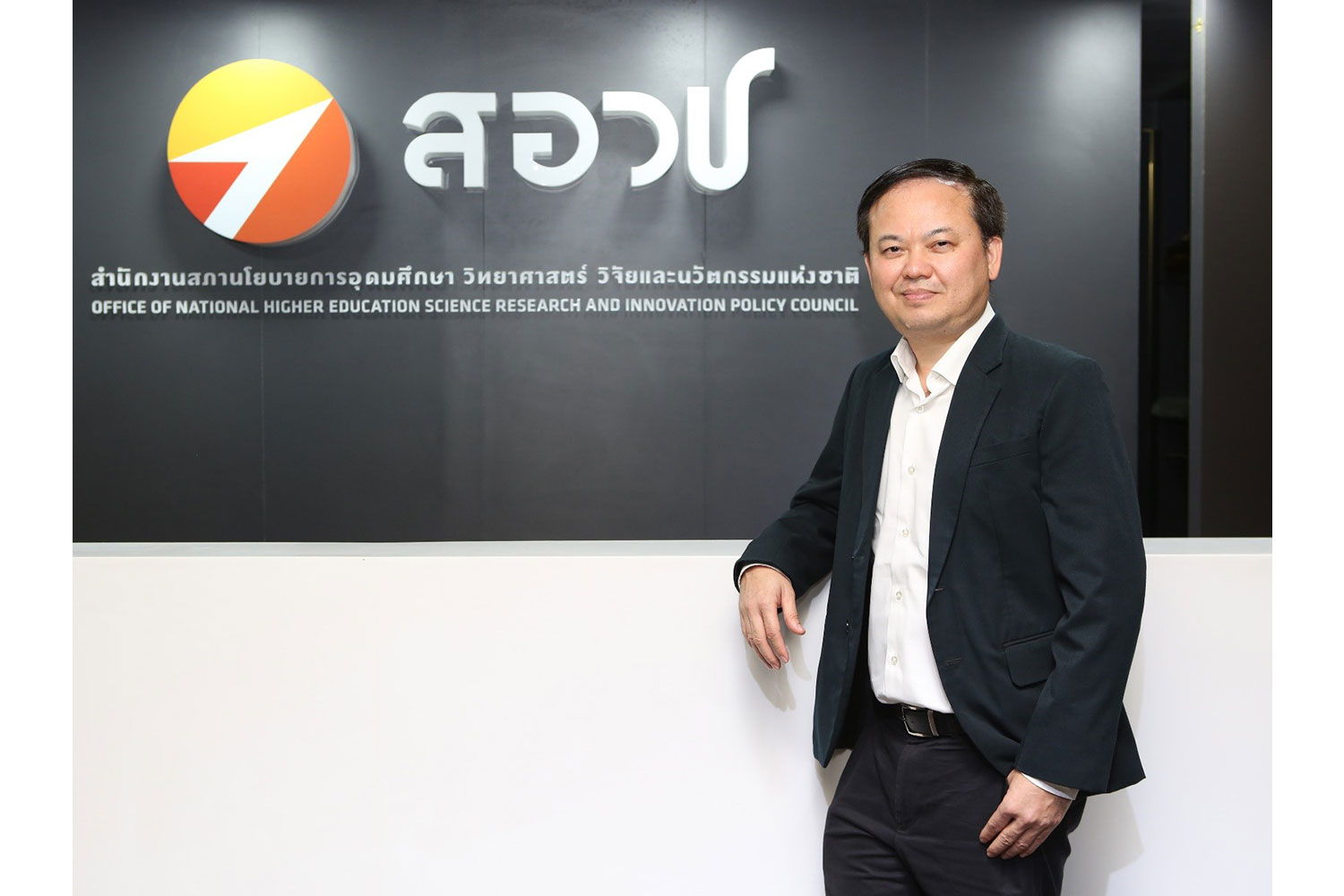Thailand’s long-term R&D outlook remains positive
NXPO pledges confidence with post-Covid measures
The research & development (R&D) investment survey undertaken by the Office of National Higher Education Science Research and Innovation Policy Council (NXPO) and the National Research Council of Thailand (NRCT) in 2019, found that Thailand spent 193,072 million baht on research & development, equivalent to 1.14% of GDP with 5.9% growth year-on-year. Of this, 23% (43,828 million baht) came from the government sector while 77% (149,244 million baht) was spent by the private sector. The top three industries with the most R&D investment were food, petroleum, and finance & insurance. Government spending primarily involved infrastructure and frontier research topics, including quantum technology, space science & technology, high energy physics, and molecular biology.
In addition, the survey found that Thailand has 166,788 full-time equivalent personnel on R&D in 2019, equivalent to 25 out of 10,000 people, up 4.6% from the previous year.
Unfortunately, the situation is now different due to the global Covid-19 pandemic, according to Dr. Kitipong Promwong, NXPO President. “The economic slump due to the pandemic caused the private sector to cut spending during the time of crisis. Thailand is predicted to see a significant decrease in R&D investment during 2020-2022, down to lower than 1% of GDP, though it should recover somewhat in 2023.”
He further explained that unravelling Covid-19 would be a key factor in determining the future of R&D. “If the spread is under control and mass vaccination proceeds smoothly, economic recovery will follow and investment in research & development will soon resume. Otherwise, the R&D budget could be delayed.”
Nonetheless, Dr. Kitipong trusted that Thailand can still keep its eyes on the prize.
“Without stimulation from the government, the figure for R&D investment might fall flat at 1.46% of GDP by 2027, missing the target of 2%,” he said. “However, NXPO believes that knowledge, technology, and innovation are important factors to drive the country’s competitiveness on the global stage. Investment in research & development will create opportunities for Thailand in the long run. Therefore, Thailand will maintain the goal of 2% by 2027 by encouraging private sectors to continuously conduct research and studies.”
Therefore, NXPO has proposed several key measures to help drive Thailand towards a bright future with research & development, including:
- Create an ecosystem conducive to research, development, and innovation. This ranges from providing tax incentives to giving financial support by setting up a matching fund of up to 10 million baht per project. Oftentimes, the government helps supply research infrastructure such as laboratories, research equipment, and pilot plants. Moreover, there is an accelerator centre to help scale up business for startups.
- Increase ease of doing innovation business with the aid of law and regulation amendments. For example, now fund recipients can hold the rights of their research, enabling them to create commercial values out of their studies. To support talent mobility, researchers who are government employees are now allowed the flexibility to collaborate more with private companies on more commercial projects.
- Supervise market mechanisms to support innovation. For example, government agencies can be encouraged to purchase products on the Thai innovation list in order to jumpstart demand for Thai innovations and provide feedback. Innovation markets in certain industries can be supported by the government because the products are mainly public goods such as agricultural produce.
Dr. Kitipong stressed that research & development is of great significance to the national economy: “An example would be Siam Bioscience, which was chosen by AstraZeneca to be a production base for Covid-19 vaccines. It helps Thailand build vaccination security in light of international health crises.”
“R&D can also enhance seemingly trivial products. For example, the skin of mangosteen fruits. After studies, it turned out that the skin can be used as a disinfectant. Now, the crude extract is priced over 2,000 baht per kilogram, and the medical grade can be as expensive as 100,000 baht per kilogram. This is not to mention the pure form for further research, which can be sold at 1-2 million baht per kilogram.”
Furthermore, the ultimate goals of research & development are incalculable.
“First, Thailand will eventually escape the middle-income trap,” said Dr. Kitipong. “Secondly, it will reduce the income gap. It is forecast that the average income of an agricultural household will increase from 58,000 baht to 150,000 baht per year over the coming five years. Lastly, R&D can help the country reduce the problem of urban poverty,” said Dr. Kitipong.
He added that he believes that Thailand’s long-term R&D outlook remains positive.
“NXPO has always worked closely with manufacturing and service sectors, and the corporate world knows that, going forward, Thailand will have to innovate in order to compete. The good news is that we have enough resources and potential. Plus our academic sector and universities are among the best in Asia. We firmly believe that investment in research & development will serve as an opportunity for Thailand in the long run.”






